With loads of flavor from soy sauce, Worcestershire sauce, and garlic, this easy London broil recipe is the no-fuss entree you’ve been looking for! Whip up a simple marinade, add the steak, then cook to juicy perfection in just a few minutes.
London broil is a great option to prepare ahead of time because it needs lots of time to sit in the marinade for the best flavor and most tender beef. Serve it with your favorite sides for a delicious dinner everyone will enjoy. For more beef recipes, try my roasted beef tenderloin, roast beef recipe, or braised beef short ribs.
Ingredients
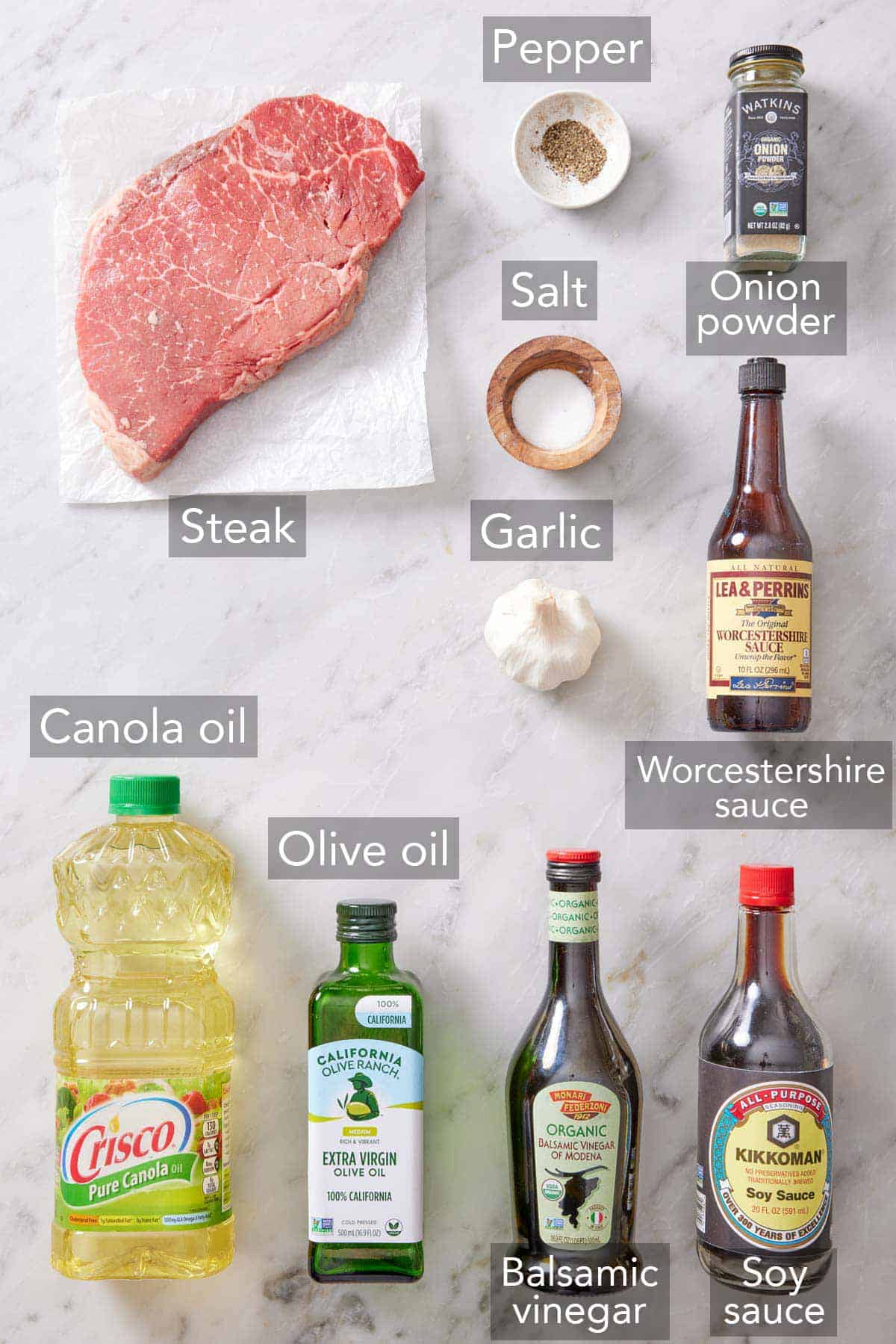
Vinegar — the acidity in the vinegar ensures a tender London broil, and its slight sweetness adds complexity to the flavor.
Soy sauce — soy sauce adds saltiness and also helps to tenderize the meat.
Worcestershire sauce — this sauce enhances the meaty flavor while also infusing every bite with umami.
Oil — olive oil helps the meat absorb the fat-soluble flavorings for the marinade, and canola oil is perfect for searing the steak since it has a high smoke point.
Garlic — use fresh minced garlic cloves for the best results, not the kind in a jar.
Seasonings — onion powder goes into the London broil marinade, while salt and ground black pepper are added after the steak is marinated and ready for searing.
Steak — a lean cut of beef is best (see options below). I prefer a top round steak.
What Cut of Beef Should I Use?
London broil does not actually refer to a specific cut of meat but rather a method of cooking involving a long marinating time followed by a short cooking time over high heat.
Typically, leaner, tougher cuts of beef are used for London broil. Top-round steak is my preference, but top sirloin, skirt steak, or flank steak works as well.
How To Make London Broil
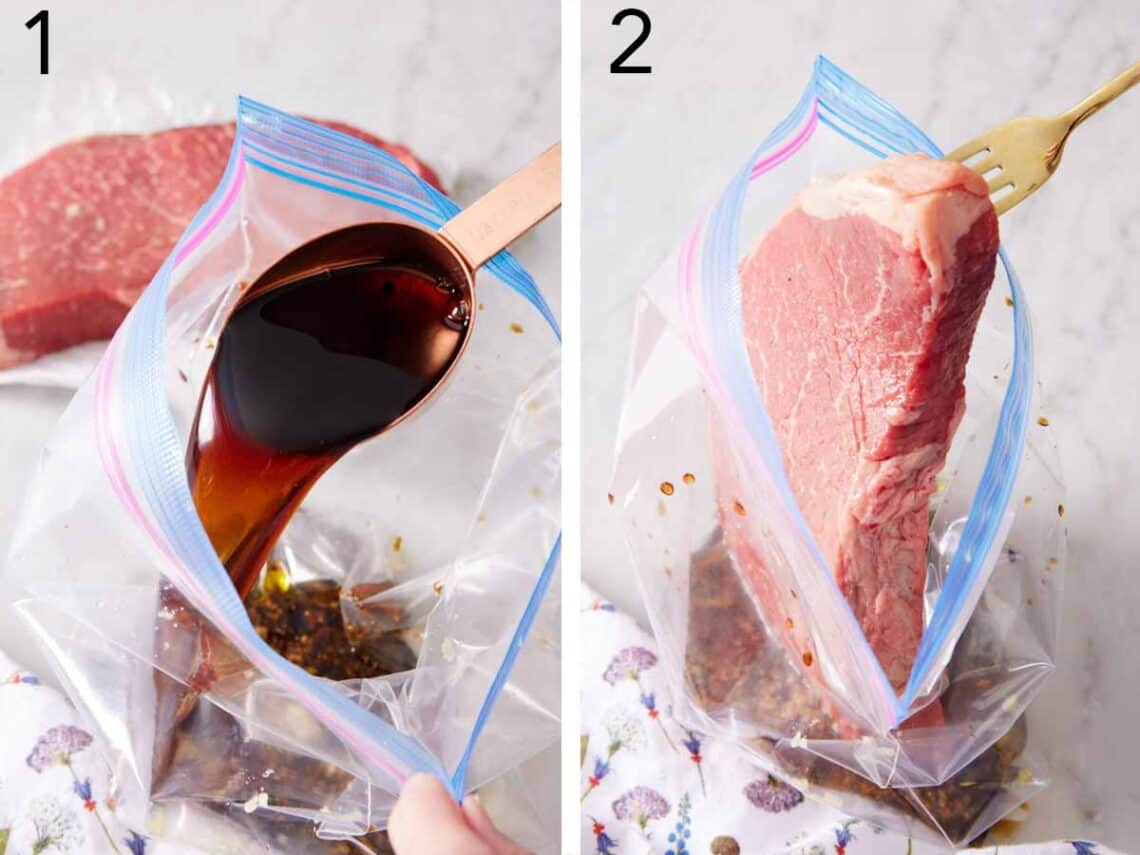
1. Make the marinade in a large zip-top bag by combining the balsamic vinegar, soy sauce, Worcestershire sauce, olive oil, minced garlic, and onion powder.
2. Add the London broil steak to the bag and seal. Let the steak marinate for at least 2 hours, or ideally 12 to 24 hours.
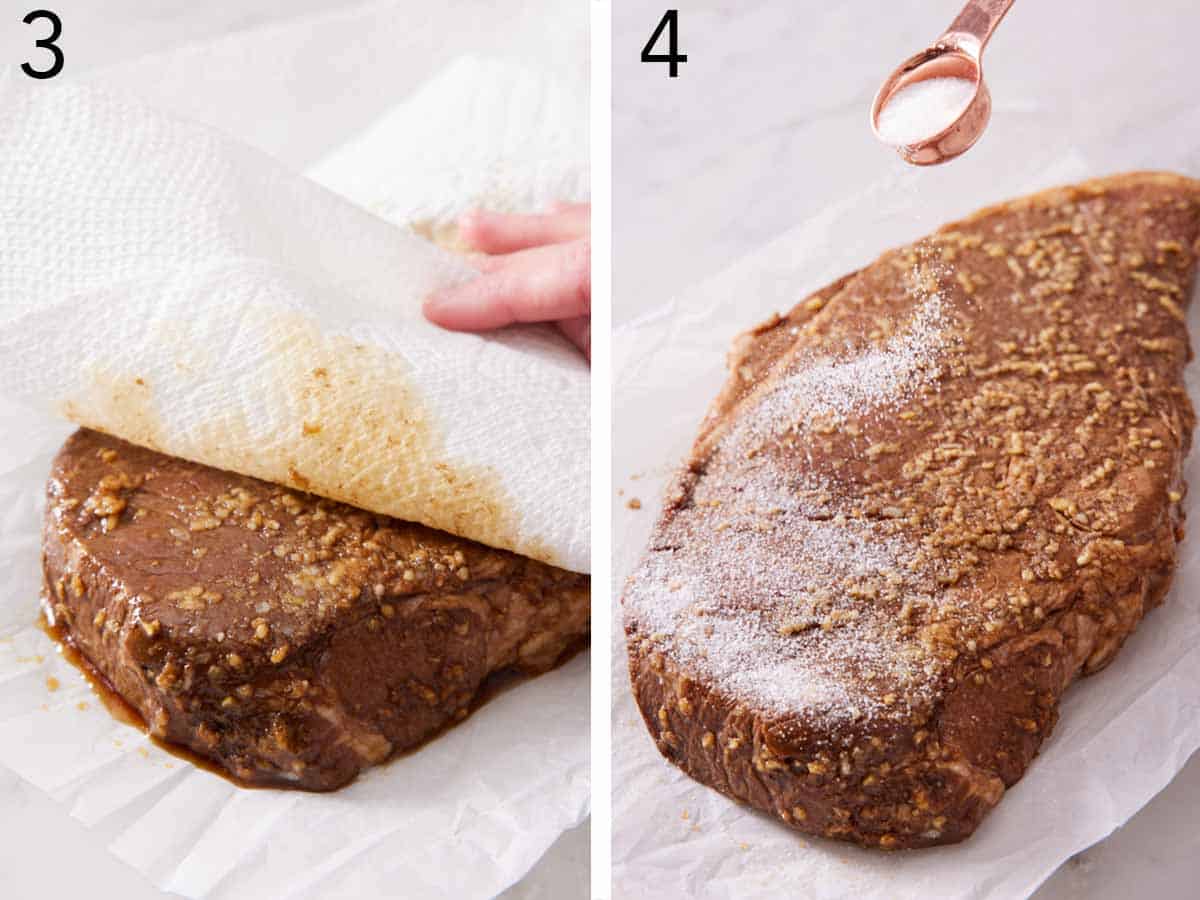
3. After the steak has marinated, remove it from the bag and discard the leftover marinade. Pat the steak dry with paper towels.
4. Season all over with 1 teaspoon salt and ¾ teaspoon black pepper. Let it stand at room temperature for 15 minutes.
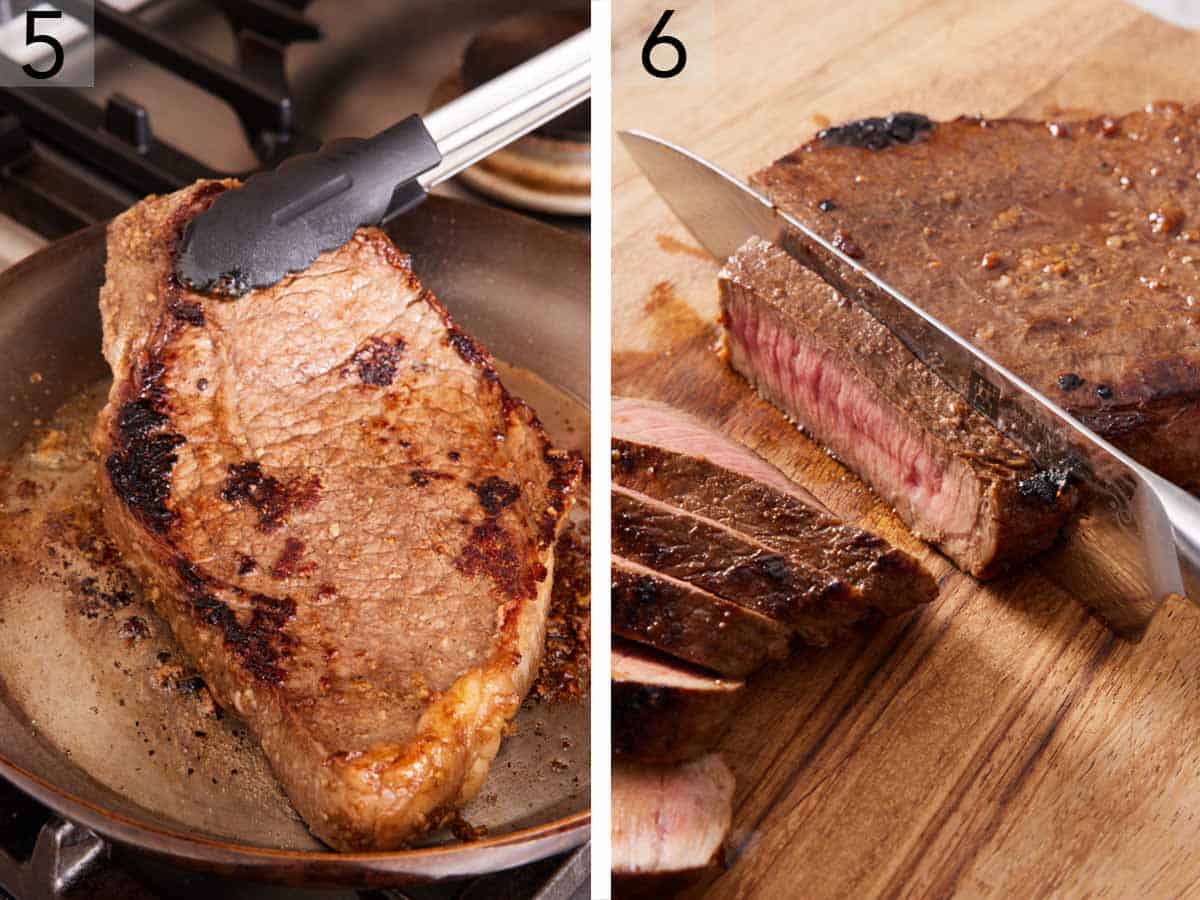
5. Heat canola oil in a large skillet over medium heat. Cook the steak until well browned on the bottom, then flip and cook until browned on the other side.
6. Let the steak rest on a cutting board for 10 minutes. Thinly slice it against the grain with a sharp knife to serve.
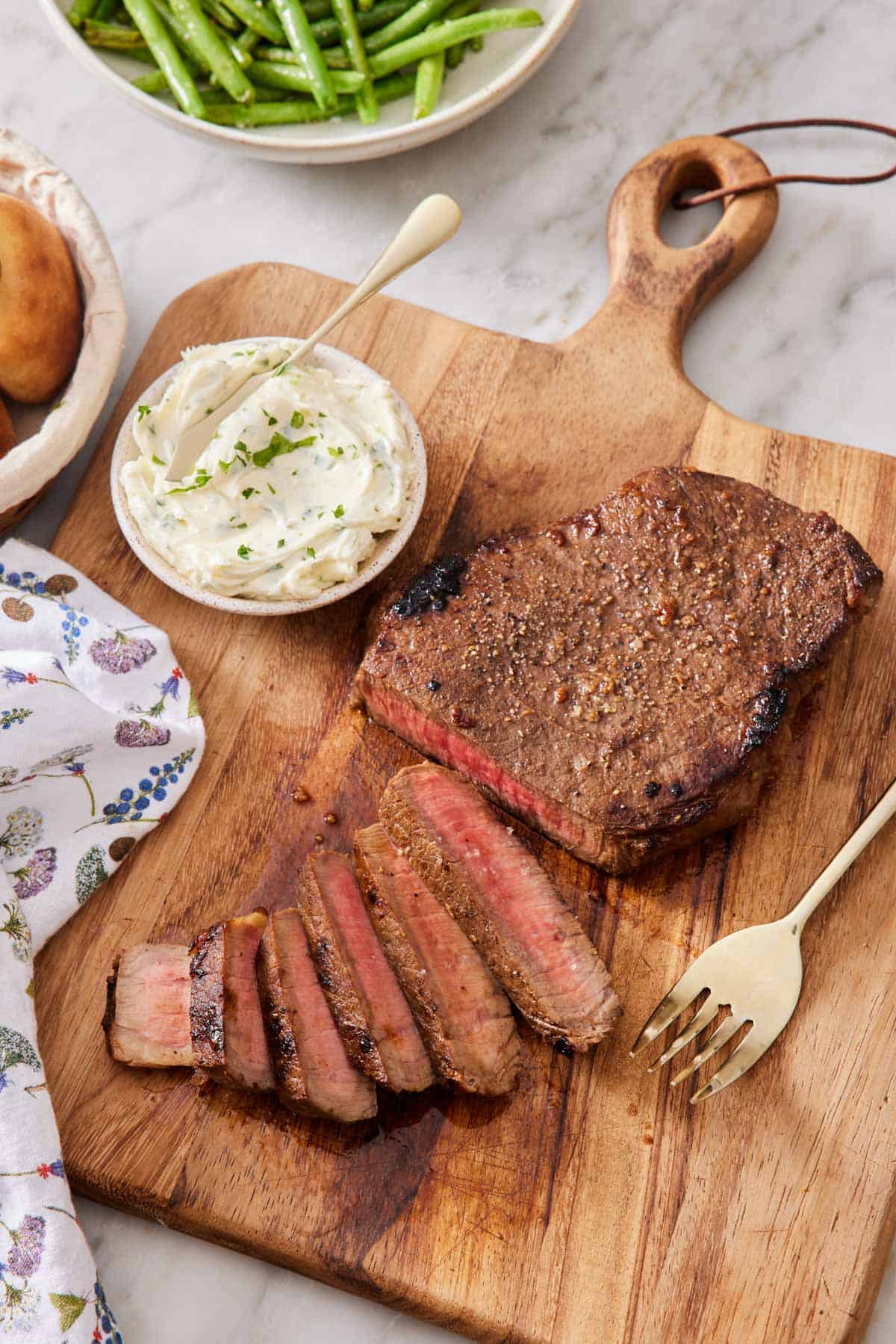
Marinate For A Tender London Broil
I don’t recommend skipping this step! Because London Broil uses a lean cut of beef, it can easily become tough when cooked. Marinating helps to tenderize the meat and will also give you a perfectly flavorful steak. Let the steak sit in the marinade for at least 2 hours, but ideally 12 to 24 hours. This will give the salty and acidic ingredients plenty of time to work their magic.
Doneness Temperatures
The internal temperature will rise 5 to 10 degrees while the London broil rests, so you want to pull the steak off the heat before it reaches your desired temperature. Use a meat thermometer to time it exactly. Here’s a quick cheat sheet for what temperature to cook the steak to before it rests:
- Medium-Rare: Cook to 125°F (internal temp of 130-135°F after resting)
- Medium: Cook to 135°F (internal temp of 140-145°F after resting)
- Medium-Well: Cook to 145°F (internal temp of 150-155°F after resting)
Other Cooking Methods
Some classic London broil recipes use other methods of cooking the marinated steak. While I prefer the flavor produced by the hot sear of the stovetop method, you can cook up a delicious top round London broil with either of these as well.
- Oven Method: To make this London broil recipe in the oven, place the marinated steak on an oil-rimmed baking sheet and broil it for 5 to 7 minutes per side, depending on your doneness preference. Be sure to preheat the broiler before putting in the steak.
- Grilling: If you want to cook your London broil on the grill, place the steak on a preheated grill over medium-high heat and cook for about 7 minutes per side.
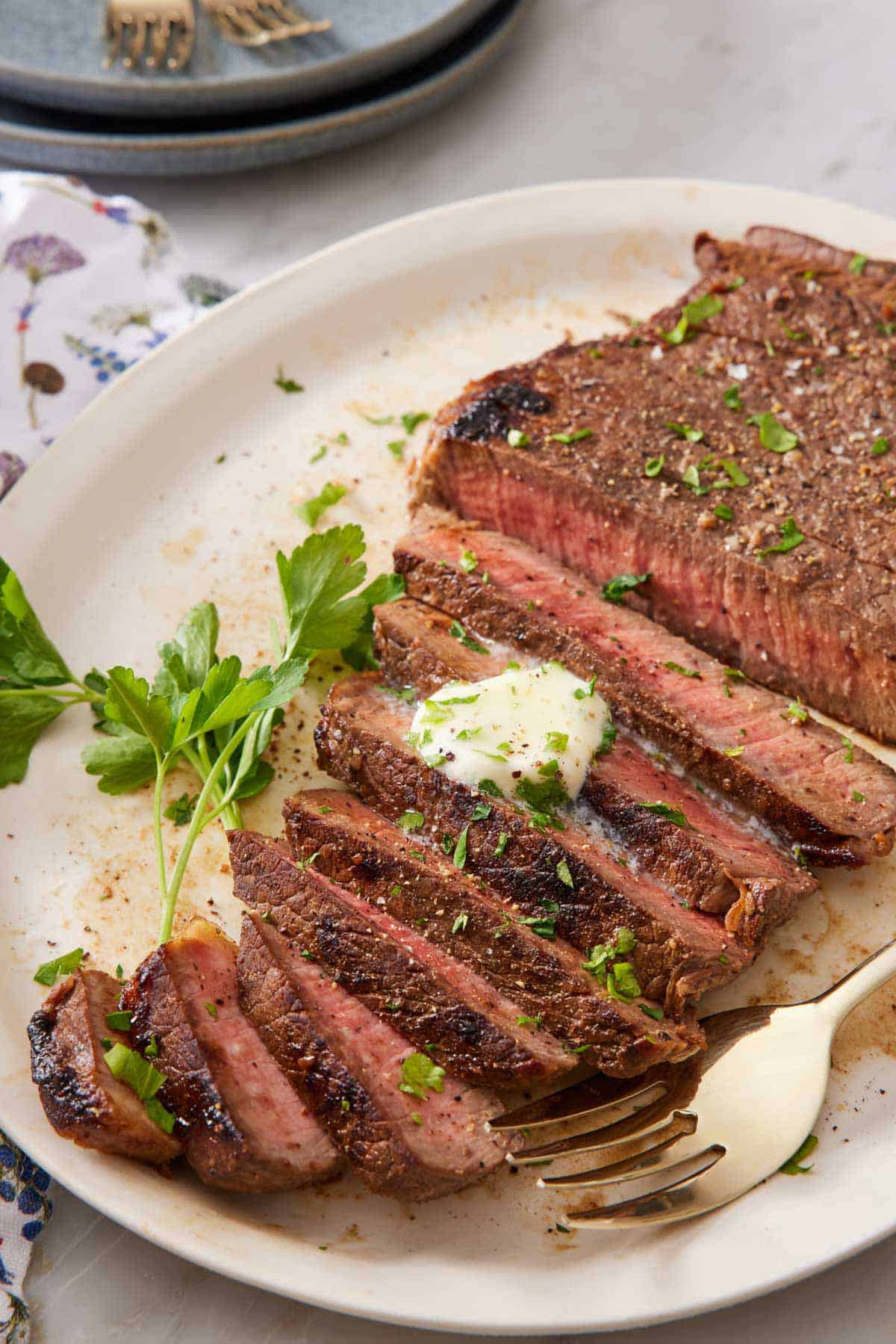
Substitutions And Flavor Variations
- Use lemon juice. Swap all or part of the balsamic vinegar for lemon juice. You can also use red wine vinegar.
- Add brown sugar or maple syrup to the marinade for extra caramelization and even more depth of flavor. 1 tablespoon is plenty!
- Add extra herbs. Dried or minced fresh rosemary, thyme, or oregano are mind-blowing in this recipe! You can add them to the marinade or create an herb crust by adding it with the salt and pepper after patting the steak dry in step 2.
Pro Tips For Making This Recipe
- Don’t marinate the steak for too long. Twenty-four hours is the maximum. Leaving the steak in the marinade for longer than that will cause the texture to become unpleasantly mushy instead of tender.
- Let the steak stand at room temperature before cooking. This will ensure the steak cooks evenly. If it is too cold, the outside may cook too fast while the inside remains undercooked.
- Let the steak rest after cooking. The temperature will rise 5 to 10 degrees, so the resting time is important for the steak to finish cooking to your desired doneness. In addition, while the beef rests, the juices redistribute, so the end result is perfectly juicy.
- Cut the steak against the grain for tender, never chewy, bites. You can determine the grain of the steak by looking for the textured lines in the meat. Cut perpendicular to the direction that they are running. When sliced, you should see a vertical grain pattern in each slice.
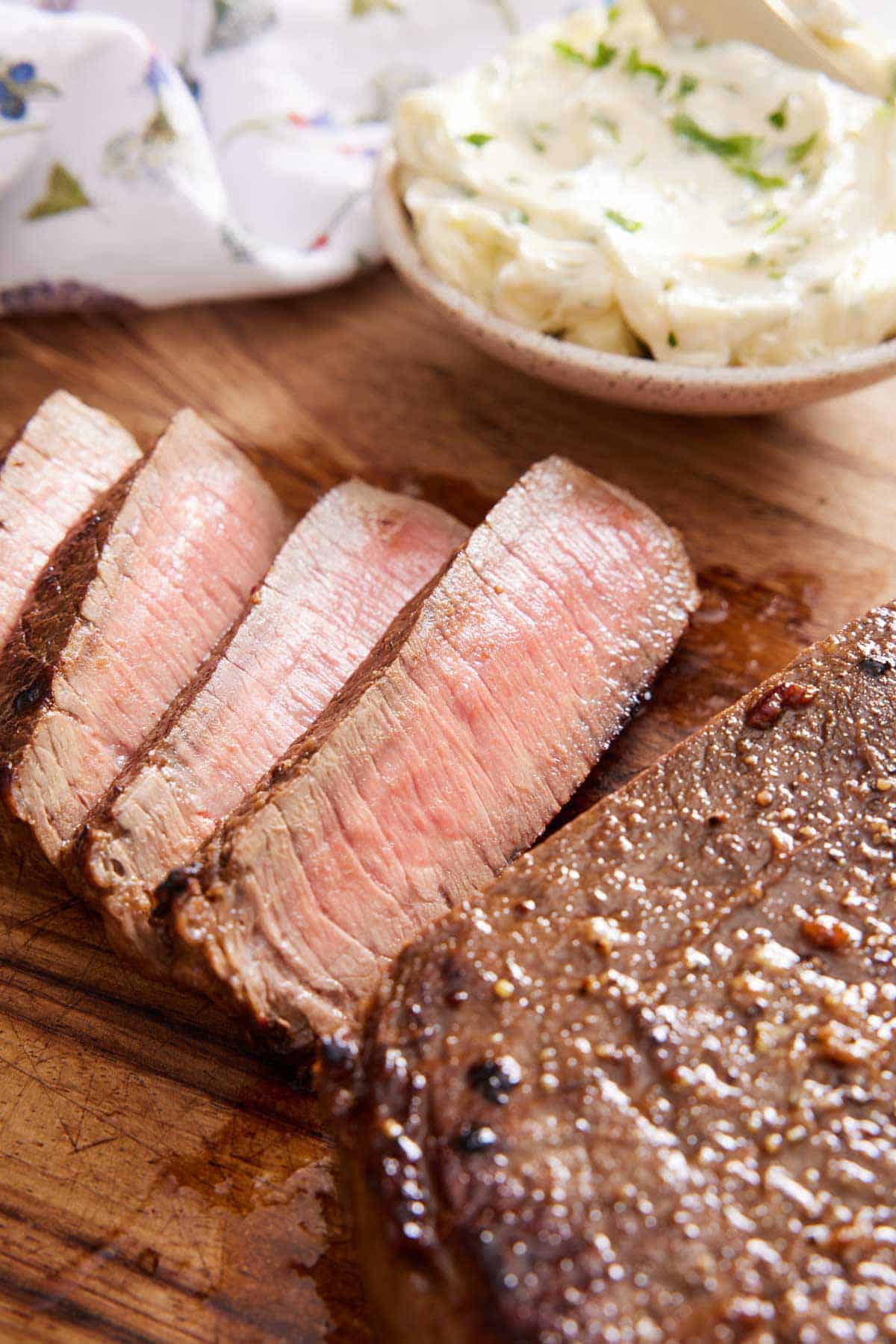
Frequently Asked Questions
I typically calculate ¼ to ⅓-pound of uncooked steak per serving. So, this recipe made with a 2-pound steak will yield 6 generous servings or 8 smaller servings.
Top your steak with salted butter or herb compound butter and serve it with your favorite sides like mac and cheese, mashed potatoes, French green beans, or roasted potatoes. Leftovers are delicious over salads or very thinly sliced and turned into sandwiches on potato bread with horseradish sauce.
Once cooled completely, store leftovers in an airtight container in the refrigerator for up to 3 days.
So the London broil maintains its juiciness and tender texture, avoid the microwave. Instead, reheat leftovers on the stovetop by cooking each side for 2 to 3 minutes in a hot skillet or in the air fryer at 400°F for 5 to 7 minutes until heated through.
If you’ve tried this London broil recipe, then don’t forget to rate it and let me know how you got on in the comments below. I love hearing from you!
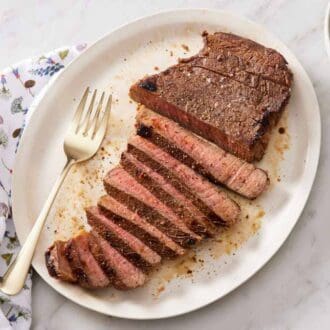
London Broil Recipe
Ingredients
- ⅓ cup balsamic vinegar (80ml)
- 3 tablespoons soy sauce
- 3 tablespoons Worcestershire sauce
- 2 tablespoons olive oil
- 6 garlic cloves minced
- 1 teaspoon onion powder
- 1 teaspoon salt
- ¾ teaspoons ground black pepper
- 2 pounds London broil such as round steak (900g)
- 1 tablespoon canola oil
Instructions
- In a large ziptop bag, combine the balsamic vinegar, soy sauce, Worcestershire sauce, olive oil, garlic, and onion powder. Add the steak, and seal the bag. Chill for at least 2 hours, or ideally 12 to 24 hours.
- Remove the steak from the marinade, and discard the marinade. Pat the steak dry with paper towels. Season the steak all over with 1 teaspoon salt and ¾ teaspoon pepper. Let stand at room temperature for 15 minutes.
- Heat the canola oil in a large skillet over medium. Cook the steak until well browned on the bottom, 3 to 4 minutes. Flip and cook until browned on the other side, and the internal temperature registers 135°F for medium-rare, 3 to 4 minutes more.
- Transfer steak to a cutting board and let rest for 10 minutes. Thinly slice the steak against the grain to serve.
Notes
- Don’t marinate the steak for too long. Twenty-four hours is the maximum. Leaving the steak in the marinade for longer than that will cause the texture to become unpleasantly mushy instead of tender.
- Let the steak stand at room temperature before cooking. This will ensure the steak cooks evenly. If it is too cold, the outside may cook too fast while the inside remains undercooked.
- Let the steak rest after cooking. The temperature will rise 5 to 10 degrees, so the resting time is important for the steak to finish cooking to your desired doneness. In addition, while the beef rests, the juices redistribute, so the end result is perfectly juicy.
- Cut the steak against the grain for tender, never chewy, bites. You can determine the grain of the steak by looking for the textured lines in the meat. Cut perpendicular to the direction that they are running. When sliced, you should see a vertical grain pattern in each slice.



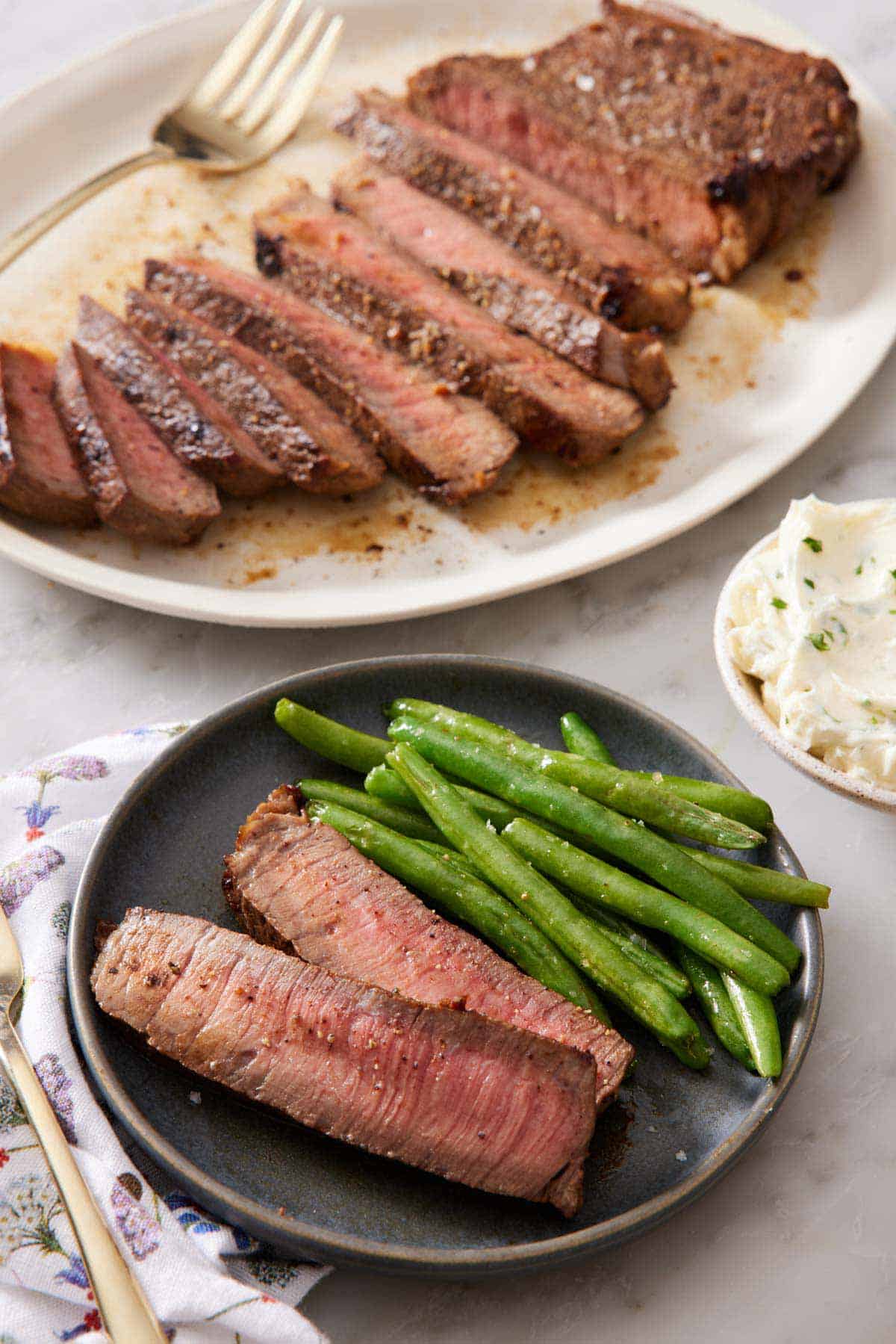
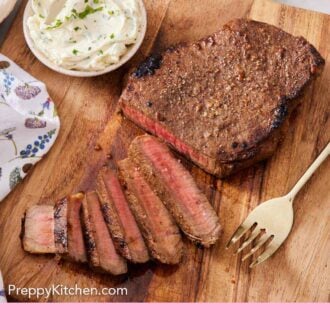
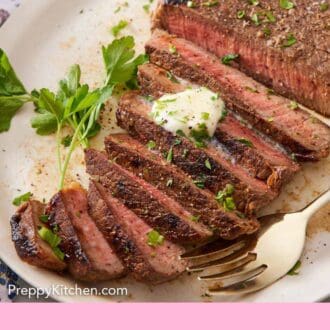
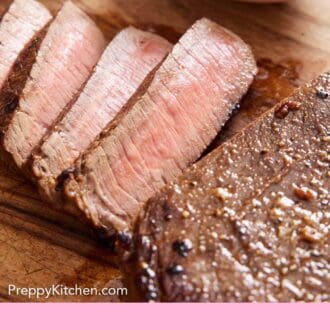
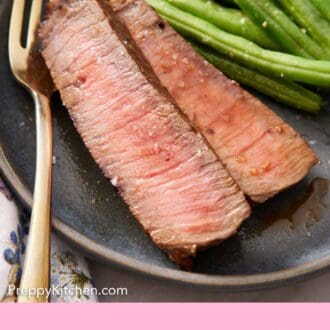
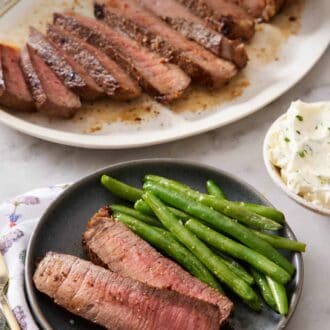
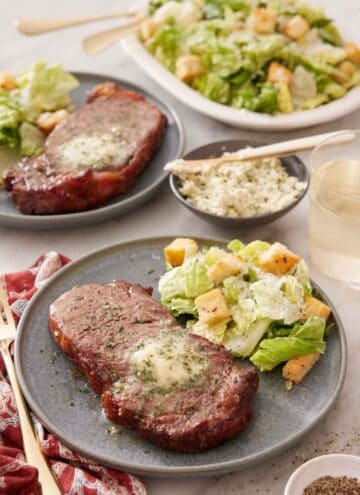
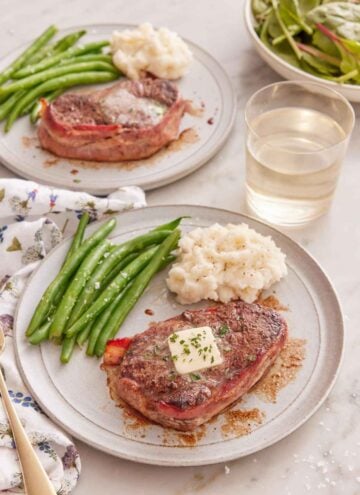
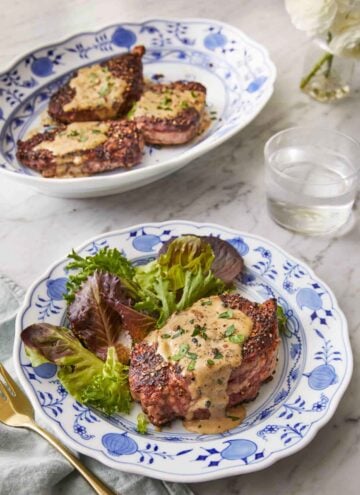
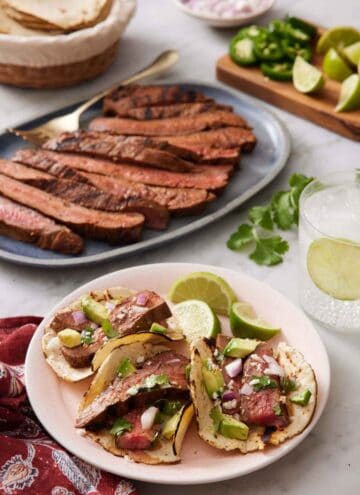
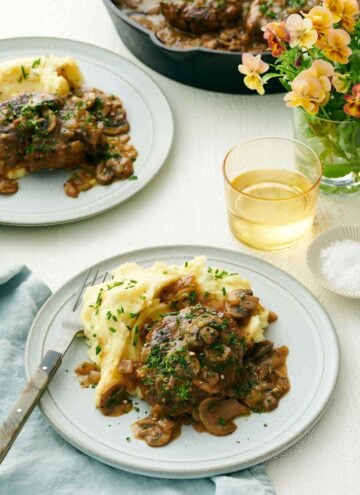

Leave a Reply